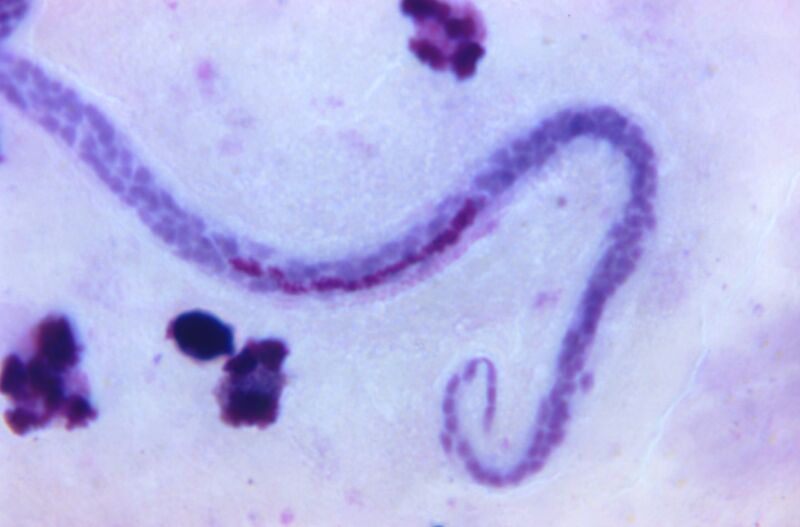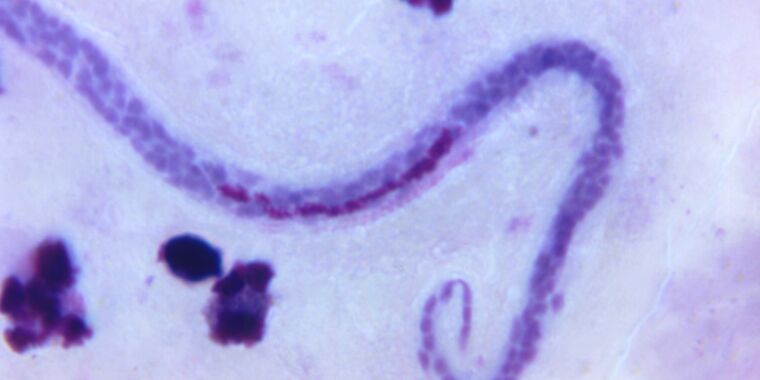
When parasitic worms make it into a scrotum, they have a ball—and dance like nobody’s watching.
But in a hospital in New Delhi, India, doctors were watching. And they caught the dangling disco on film, down to their lymphatic limbo line, according to a short report appearing in the New England Journal of Medicine this week.
The parasitic worms in this case were Wuchereria bancrofti, which are spread by mosquitoes in some tropic and subtropical areas of Asia, Africa, the Western Pacific, the Caribbean, and South America. The wriggling ravers stream through the human lymphatic system. Adult worms can live for five to seven years and, when they mate, can produce millions of boogying babies, called microfilariae. Together, they cause a disease called lymphatic filariasis that can lead to tissue swelling (lymphedema), elephantiasis, and, in men, swelling of the scrotum.
The thread-like parasite’s penchant for pirouetting is well-established. In medical terms, ultrasound imaging of their scrotal soirées is referred to as the “filarial dance sign.” As the authors of the NEJM report explain: “The dance sign represents the undulations of live worms that have migrated into lymphatic channels, causing dilation and dysfunction of the channels.” (The report includes video but is behind a paywall. A similar example of the filarial dance sign can be seen here.)
Images of the swinging dances are considered sure signs of lymphatic filariasis and can even distinguish the type of harm the testicular tangos are causing.
In the NEJM report, the authors, Amit Sahu and Bharat Aggarwal of the Max Super Specialty Hospital in New Delhi, spied the festering festivities in a 26-year-old man, who had a one-month history of scrotal pain and swelling, as well as low-grade fevers. An ultrasound examination quickly caught the ballsy revelers responsible. Blood testing confirmed the diagnosis, and examination of the young worms identified them as Wuchereria bancrofti microfilariae.
The man was given a three-week course of the antiparasitic drug diethylcarbamazine, which can kill microfilariae and some adult worms. After that, his symptoms resolved and there were no more signs of parasitic partying.








